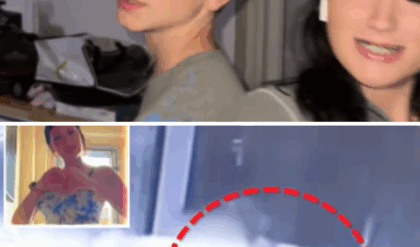The Story: Eminem Tests Kendrick Lamar’s Authenticity
Picture Detroit, sometime in the early 2010s—say, 2012, when Kendrick Lamar’s star was rising with Section.80 and good kid, m.A.A.d city on the horizon. Eminem, the “Rap God” at the peak of his post-recovery powers with Recovery (2010) and The Marshall Mathers LP 2 (2013) in the works, hears the buzz: this kid from Compton’s being called “the best rapper alive.” Eminem, a skeptic forged by battles and betrayal, isn’t sold. “Eminem thought Kendrick Lamar was a fake rapper,” the story goes, suspecting the hype might be smoke and mirrors—maybe a ghostwriter penning those intricate rhymes. So, he decides to put Kendrick to the test.

Kendrick’s in town for a show, maybe at Saint Andrew’s Hall, a venue Eminem knows well from his own come-up. Em, ever the strategist, sends word through his Shady Records crew: “Come by the studio tomorrow. Let’s make something.” Kendrick, 25 and hungry to prove himself, agrees. The next day, he rolls up to Eminem’s spot—likely Effigy Studios in Ferndale, just outside Detroit—with his Top Dawg Entertainment posse in tow: ScHoolboy Q, Jay Rock, maybe Ab-Soul, all vibing off the road energy. Eminem greets them, all business, hoodie up, no smile. “Let’s do a track,” he says, ushering Kendrick inside.
Kendrick lays down a hook—something slick, soulful, Compton-coded. Eminem nods, impressed but not convinced. “I like it,” he says, “but you’re not done.” Kendrick’s about to bounce—tour life’s tight—but Eminem drops the bomb: “Write a verse. Right now. One condition: your crew’s out.” The room freezes. Kendrick’s friends, mid-laugh, get the stare-down from Em. “No mercy,” the story claims—Eminem points to the door. “They wait in the parking lot. Me and you, one-on-one.” His sound engineers—say, the Porters or Denaun—would step in later to record, but first, it’s just the two MCs and a blank page.
Why the hard line? “Eminem’s reasoning was insane: he wanted to test Kendrick because he suspected he had a ghostwriter.” In Em’s world, authenticity is everything—forged in 8 Mile cyphers where you sink or swim solo. If Kendrick’s the real deal, he’d prove it without his homies whispering lines. Kendrick, unfazed, agrees. The crew files out, grumbling, into the Michigan cold, leaning on the car, puffing smoke. Inside, it’s a lyrical cage match. Eminem scribbles, Kendrick flows—two pens, two pads, no beats yet, just raw bars. Kendrick drops a “sick verse,” weaving storytelling and punchlines, while Em counters with his signature venom. Hours pass. The engineers come in, lay it down, and when Kendrick spits his bars—alone, no notes, no help—Eminem’s suspicion melts. “After Kendrick spit his bars in the studio alone, Eminem realized he didn’t have a ghostwriter and was, in fact, a legitimate rapper.”
Does It Check Out?

No public record confirms this exact showdown. Eminem and Kendrick did collaborate—on “Love Game” from The Marshall Mathers LP 2 (released November 5, 2013)—but that track’s origins are murky, likely stitched together via file swaps, not a live Detroit session. Kendrick was in Detroit around then; he played The Fillmore on November 10, 2012, for the good kid tour, aligning with a possible overlap. Eminem’s praised Kendrick publicly—calling him “definitely a top-tier lyricist” in a 2013 Hot 97 interview—and Kendrick’s returned the love, naming Em a GOAT in a 2012 Complex piece. Their mutual respect suggests a meeting could’ve happened, but the “ghostwriter test” feels like fan lore.
Eminem’s a known purist—his disdain for ghostwriting’s clear in jabs at rappers like Canibus or his own insistence on penning every line (see The Way I Am, 2008). Kendrick’s authenticity, meanwhile, is ironclad; good kid, m.A.A.d city was a solo masterpiece, no whispers of outside pens. The “crew ban” twist fits Em’s lone-wolf vibe—he’s recorded with minimal entourages since the D12 days—and Kendrick’s cool-headedness tracks with his reputation. But no X posts, Shade 45 clips, or TDE leaks from 2012-2025 back this up. It’s a legend, not a logbook.
The Drake Dig
The story ends with a zinger: “Drake would be like ‘nahh I can’t do it without my homies’ 😂.” It’s a perfect jab—Drake, the Toronto king, thrives with his OVO squad, from 40’s beats to PartyNextDoor’s hooks. His ghostwriting scandals (e.g., Quentin Miller’s credits on If You’re Reading This It’s Too Late, 2015) make him the anti-Kendrick in this tale. Eminem’s roasted Drake before—“I’m not gonna diss Drake, he’s got enough people doing that,” he quipped in 2018—but the contrast here is chef’s kiss: Kendrick rises to Em’s challenge, Drake hypothetically folds. Fans on X would eat it up: “Drake would’ve brought a choir, Kendrick brought bars.”
What It Means

If true, this studio face-off cements Eminem as a gatekeeper, testing the new guard, and Kendrick as a worthy heir, passing with flying colors. It’s less about doubt and more about respect—Em pushing Kendrick to prove what he already sensed. Without footage or a track (maybe “Love Game” was the result?), it’s a hip-hop campfire story: two titans, one mic, no crutches. It changes nothing about their legacies—both are undisputed—but adds a gritty chapter to their lore. What do you think—did Em really test K-Dot, or is this just the collab we dream of? Either way, Drake’s sweating somewhere.

